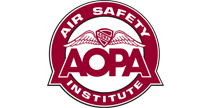Not according to plan
(ERA10FA502)
 By David Jack Kenny
By David Jack Kenny
It doesn’t seem like too much to ask that someone responsible for teaching flight planning actually be able to do it. Likewise, it doesn’t seem unreasonable to expect someone charged with showing students how to monitor cross-country flights to exercise that skill on personal flights as well. A good first step in flight planning is determining the amount of fuel available, and a good first step toward that is knowing how much the aircraft can actually carry. An important aspect of tracking the flight’s progress—arguably, the most important—is keeping an eye on how quickly that fuel makes its way through the engine.
Shortly before 11 p.m. on Sept. 24, 2010, the pilot of a Cessna 172K declared a mayday for “engine failure.” The airplane was about five miles southeast of the Dalton, Ga., airport en route to Chattanooga, Tenn.; a minute and a half earlier, the pilot had advised Chattanooga Approach that he was changing his destination to Dalton, some 29 nm closer to his present position. He had the field in sight when the engine stopped, but had already descended to 2,000 feet, putting it beyond gliding distance. The airplane clipped a tree and hit the ground, killing the 24-year-old CFI at the controls and the 21-year-old, 54-hour private pilot in the left seat. The commercial pilot in the back seat survived his injuries, but remembered nothing between the initial contact with the tree and waking up in the hospital.
He didn’t remember much about the flight, either, as he’d slept through most of it. When he woke up, the CFI told him, “I think we need to land,” and he noticed that the fuel gauges “looked very low.” The engine began running rough, and the CFI switched the fuel selector “to the other tank … and then back again” as the engine stopped. First responders found less than three gallons on board; in the Cessna 172K, four gallons are considered unusable.
The flight had originated at the Massey Ranch Airpark in New Smyrna Beach, Fla., around four hours earlier, and then obtained an IFR clearance from Daytona Approach shortly after 7 p.m. The flight to Chattanooga was intended to be the first leg of a run up to Schaumberg, Ill., to spend the weekend with the CFI’s cousin. The straight-line distance from Massey Ranch to Chattanooga is 424 nautical miles, but runs right through the middle of Atlanta’s Class B airspace. From Chattanooga to Schaumberg, the straight-line distance is 440 nm. Each could be expected to take about four hours in neutral winds.
Already we see a problem. The investigators recovered the flight-planning calculations done on the DTC DUAT website. Fuel burn was assumed to be 9 gallons per hour during climb, cruise, and descent alike. The Cessna 172K carries 38 gallons of usable fuel, about 4.2 hours at that rate. The software’s estimate of the flight time from Massey to Chattanooga (which proved to be optimistic) was 3:44. That would have left a 28-minute reserve—less than the required minimum for daytime VFR, never mind IFR at night. Honoring the 45-minute reserve requirement for night flights would have limited the length of each leg to three and a half hours, making it impossible to get from New Smyrna Beach to Schaumberg with just one fuel stop. However, those same calculations specified the fuel on board as 53 gallons, ample for a four-hour flight.
While it’s possible that “53 gallons” was just a default no one bothered to override, there’s some evidence to the contrary. The survivor wasn’t sure which of the front-seat pilots had actually done the flight planning, but when investigators asked if he knew the 172’s fuel capacity, he thought it was 56 gallons usable—and was very surprised to learn it was only 38. More tellingly, the flight planning for the leg from Chattanooga to Schaumberg was also found. This route required an estimated 41.8 gallons—well beyond the Cessna’s range, even with no reserves. Had they somehow made it into Chattanooga and taxied to the ramp before the engine quit, then taken on, say, 39 gallons, nothing would have told them that they were about to attempt an impossible flight at night.
The fuel gauges in most small airplanes are notoriously unreliable, and wise pilots learn to rely on the clock instead—leaving some margin for error unless they know that particular airplane very, very well. Even so, if the gauges start reading much lower than they should, it’s probably worth stopping to see what’s going on. They just might know something you don’t. And no matter how accurately you measure fuel consumption, knowing how much you’ve got left depends on knowing how much you started with. We don’t know whether this CFI failed to give a new pilot’s flight planning a sufficiently careful review, or whether he actually took off cross-country without knowing the airplane’s fuel capacity. We do know that this single oversight—along with his failure to watch the instruments and make a timely diversion when they started looking suspicious—cost them both their lives.